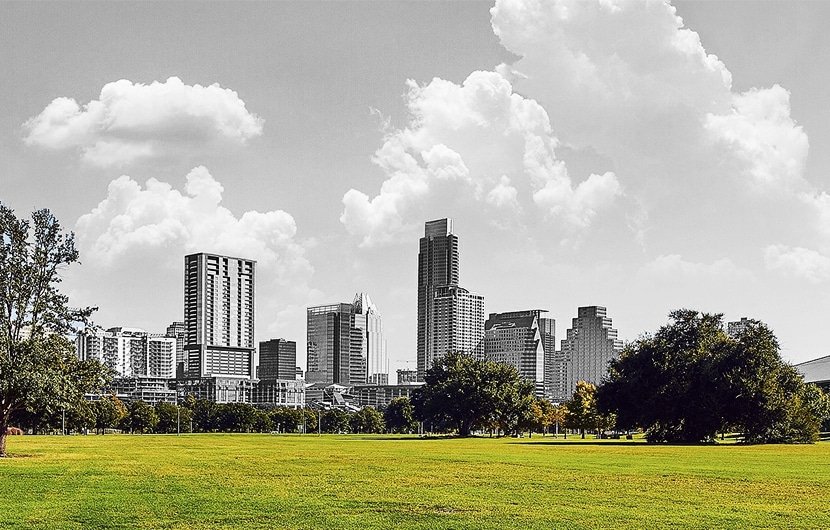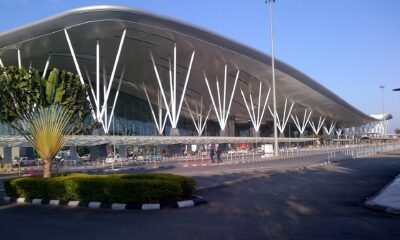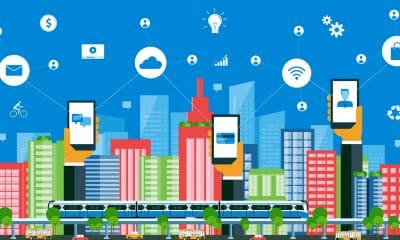Opinion
Prasoon Shrivastava, HelpMeBuild: Green Building Integration In Smart Cities For Sustainable Development
“It is pertinent to note that there is an inter-linkage among population growth, poverty and environmental degradation.”
The concept of Smart Cities vary from city to city and country to country, depending on the level of development, adaptability, resource utilization and aspirations of the city residents. To provide better living conditions for existing and future generations, cities need to be improved by adopting the smart route and at the same time focusing on the sustainability aspect and green building.
As per Ministry of Urban Development (Government of India), In the approach to the Smart Cities Mission, the objective is to promote cities that provide core infrastructure and give a decent quality of life to its citizens, a clean and sustainable environment and application of ‘Smart’ Solutions. This mission is meant to set examples that can be replicated both within and outside the Smart City, catalyzing the creation of similar Smart Cities in various regions and parts of the country.
The core infrastructure elements in a Smart City would include:
- Adequate water supply
- Assured electricity supply
- Sanitation, including solid waste management
- Efficient urban mobility and public transport
- Affordable housing, especially for the poor
- Robust IT connectivity and digitalization
- Good governance, especially e-Governance and citizen participation
- Sustainable environment
- Safety and security of citizens, particularly women, children and the elderly, and
- Health and education
India is experiencing with an exponential growth in urban population owing to the promise of more employment and entrepreneurial opportunities and good quality of life.
As per the data from Census 2011, the population living in urban regions contributes 63% of the country’s GDP. This share is only expected to increase further as more and more people migrate to urban areas. By the year 2030, cities are forecast to have 40% of the country’s population and account for 75% of the country’s GDP. Apart from advantages, urbanization also brings with it certain challenges. Many Indian cities are plagued with various environmental, social and economic issues such as resource scarcity, congestion, pollution, poverty, lack of affordable housing, proliferation of informal dwelling, as well as sewerage and sanitation problems.
Green Building and Its Features
A green building is an environmentally sustainable building, designed, constructed and operated to minimize the total environmental impacts. The basic idea behind the green building is to carve out fine techniques and skills to bring down the effect on the environment and human health to a lesser degree and by promoting the optimal use of renewable resources.
Green measures can help in improving the ecological environment and helps in reducing energy uses by at least 30-35%, carbon emission by 35% and wastages by 70% and use of water by more than 40%.
Green Building Rating
The building sector in India is set to grow exponentially in view of increasing demands of houses. It already has a huge environmental footprint, with the domestic and commercial sectors consuming some 30 per cent of India’s electricity. There are three rating systems which are in vogue that can be grouped into three categories:
- LEEDS -IGBC Initiatives: The LEED Green Building Rating System is a voluntary, consensus-based standard to support and certify successful green building design, construction and operations. The rating system is organized into five different environmental categories: sustainable sites, water efficiency, energy and atmosphere, material and resources and innovation.
- GRIHA -TERI Initiatives: The GRIHA-TERI initiative acts under the aegis of the Ministry of New and Renewable Energy. The ministry has started GRIHA as a national rating system.
- EPI -BEE Initiatives: This initiative has been started by the Bureau of Energy Efficiency, Government of India which gives star rating to the building out of the five star scale for a time span of 5 years.
Salient Features of Green Building
During the construction and operation, it minimizes the demand on fossil fuel based energy, maximizes the recycle, reuse, renewable energy and energy efficient devices and appliances. Green buildings promote the use of renewable energy systems i.e. solar water heating systems, rooftop PV system, waste recycling for energy generation etc.
The following aspects of a green building design are looked into in an integrated way.
- Sustainable site design: The selection of a sustainable site plays a vital role to make the idea of green building a great success.
- Preserve and Protect Landscape during construction: Preserve top soil by employing requisite measures and preserve existing vegetation by means of non-disturbance or damage to the trees and other form of vegetation or, trees/plants replanted within site premises in ratio of 1:3.
- Indoor Environmental Quality: While constructing a building, it should always be kept in mind that biodegradable and environment-friendly materials should be used so that they could not give rise to health hazards.
- Energy Efficiency : Keeping in mind minimum usage of energy objective in mind, the designers often suggest measures like sensors, ventilation, high-performance windows and extra insulation in walls, ceilings, and floors. Orientation of windows and walls and place trees to shade windows and roofs during the summer while maximizing solar gain in the winter. Emphasis is also given for onsite generation of renewable energy through solar power, wind power, hydro power, or biomass so as to reduce the environmental impact of the building.
- Comfort levels inside the buildings: Extremely high efficiency HVAC systems should be chosen. The HVAC system has various components like pre-cooling of fresh air heat recovery/exchanger mechanisms to minimize energy consumption in HVAC.
- Use of recycle material and recyclable material: This serves the dual purpose i.e. firstly, useful from the occupant’s point of view and secondly, unharmful for the nature point of view also.
- Innovative technologies: Use of earth air tunnels, Geothermal, Chilled Beams etc
- Reduction in waste during construction: Ensure maximum resource recovery and safe disposal of wastes generated during construction and reduce the burden on landfill.
- Efficient waste segregation: Use different colored bins for collecting different categories of waste.
- Storage and disposal of wastes: Allocate separate space for the collected waste before transferring it to the recycling/disposal stations.
- Waste water treatment: Provide necessary treatment of water for achieving the desired concentration of effluents.
- Water Efficiency: To reduce the usage of water, at water-scarce places, the used water is collected, used, purified, and reused on-site itself. Waste-water may be minimized by utilizing water conserving fixtures such as ultra-low flush toilets and low-flow shower heads.
- Water recycle and reuse (including rainwater) : Provide on-site waste water treatment for achieving prescribed concentration, rainwater harvesting, reuse of treated waste water and rainwater for meeting the building’s water and irrigation demands.
- Enhance outdoor lighting system efficiency and use renewable energy system for meeting outdoor lighting requirements
- Reduce landscape water requirement: Landscape using native species and reduce lawn areas while enhancing the irrigation efficiency and reducing the water requirement for landscaping purposes.
- Reduce water use in the building: Apply low-flow fixtures and other similar tools.
- Utilization of fly-ash in building structure: Use of fly-ash for RCC (reinforced cement concrete) structures with in-fill walls and load bearing structures, mortar, and binders.
- Renewable-energy-based hot water system: Meet 20% or more of the annual energy required for heating water through renewable energy based water-heating systems.
- Use low-VOC paints/adhesives/sealants: Use only low VOC paints in the interior of the building. Use water–based rather than solvent-based sealants and adhesives.
- Minimize ozone depleting substances: Employ 100% zero ODP (ozone depletion potential) insulation, HCFC (hydrochloro-fluorocarbon)/ and CFC (chlorofluorocarbon), free HVAC, and refrigeration equipment/and halon-free fire suppression and fire extinguishing systems.
- Tobacco smoke control: Zero exposure to tobacco smoke for non-smokers, and exclusive ventilation for smoking rooms.
Conclusion
In most parts of the world, natural resources have faced the challenge of extinction mainly because of rapid urbanization. In this connection, our Prime Minister’s vision “Digital India”, has set an ambitious plan to build 100 smart cities across the country. Modi in his speech quoted, “Cities in the past were built on riverbanks. They are now built along highways. But in the future, they will be built based on availability of optical fiber networks and next-generation infrastructure.”
Buildings are the major consumers of energy in their construction, operation and maintenance. Globally, about 40 per cent of energy consumption is estimated to be in the building sector.
It must be emphasized that, since cities are competing with each other for selection under the “Smart Cities Mission”, the SCPs have to be prepared with great care and the proposed smart city made “smart” enough.
On the one hand, to fulfil the aspirations of millions of people in the country and on the other, to maintain environmental sustainability, a balance must be there between environment and development. It is pertinent to note that there is an inter-linkage among population growth, poverty and environmental degradation. To eradicate the poverty, infrastructure development is a must, which cannot be ignored at any cost and at the same time, the protection of environment can also not be sidelined as the very survival of all beings on the earth is possible because of it. In this connection, the concept of Green building is capable enough to strike a balance between development and environment.
Disclaimer: The views and opinions expressed in this article are those of the authors and do not necessarily reflect the official policy or position of the publication








































